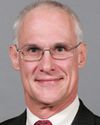It varies by state. For example, in North Dakota, which has a significant aboriginal population, the number of individuals who are in the correctional system and are of aboriginal ancestry is relatively low, but then you have to look at the powers that have been given to the communities for overall criminal justice activities, and that may be a significant factor that plays into that.
Evidence of meeting #4 for Public Safety and National Security in the 39th Parliament, 1st Session. (The original version is on Parliament’s site, as are the minutes.) The winning word was offenders.



